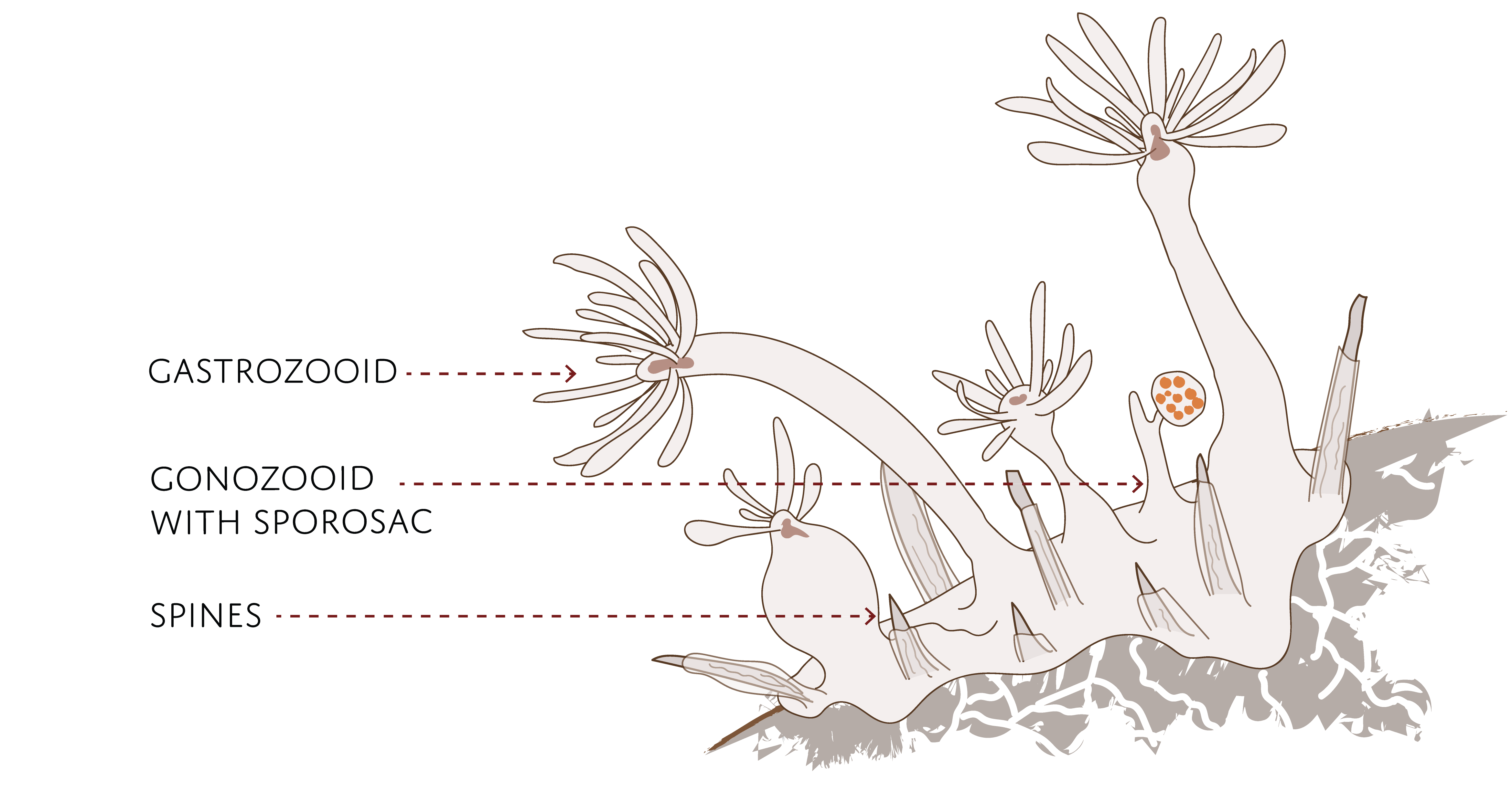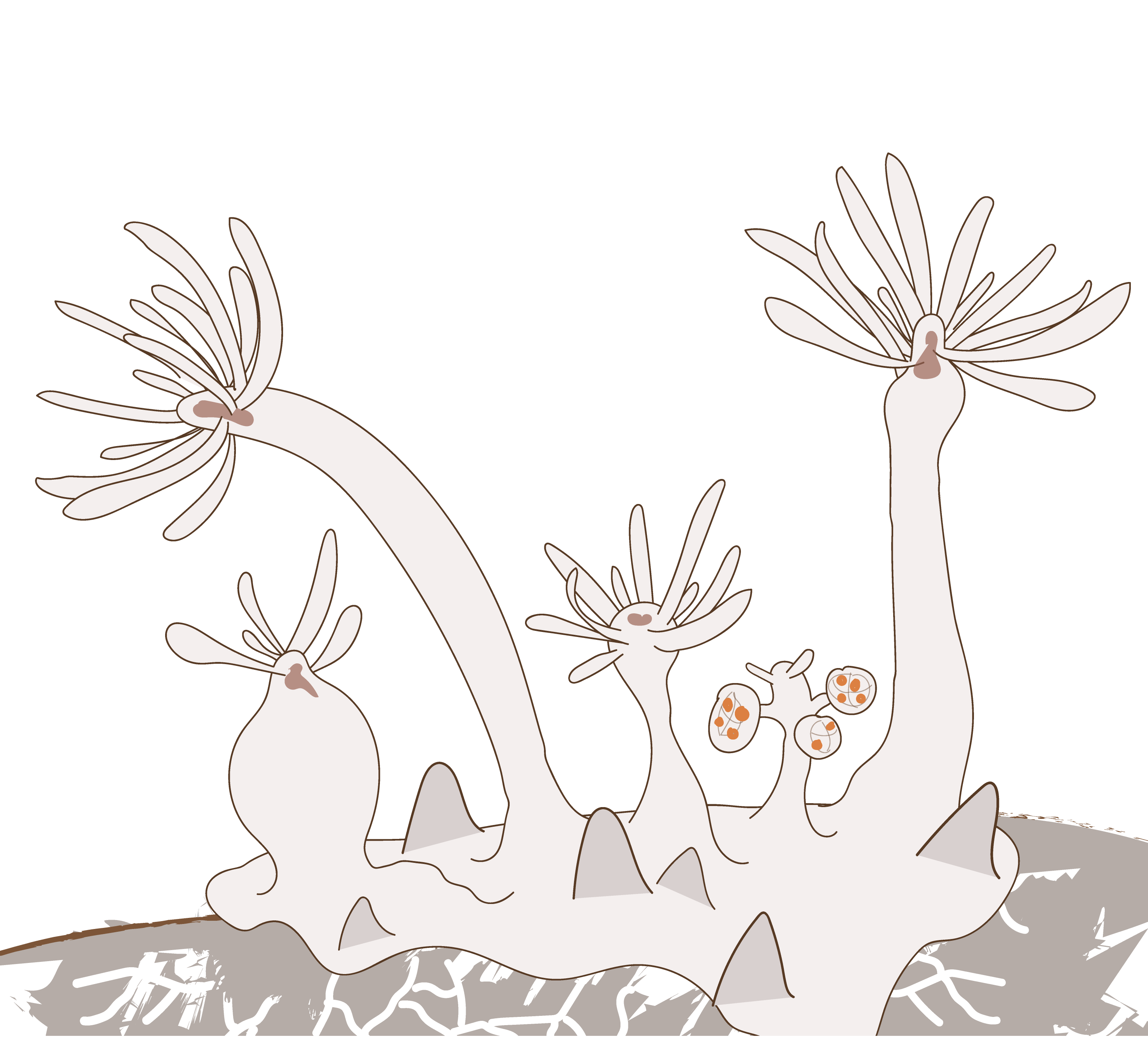Hydractinia monocarpa
This is a little-known species restricted to Arctic waters. The colonies of H. monocarpa grow preferably on marine snails of the genus Boreotrophon, but unlike other Hydractinia species they seem to be associated with the living snails and are not present when the shell is used by hermit crabs. The combination of their preferred substrate, smooth long pointed spines, and gonozooids without tentacles and with only 1 or 2 gonophores helps to distinguish this species from other Arctic hydractiniids.
Identification
The colonies of H. monocarpa have feeding polyps (gastrozooids) and reproductive polyps (gonozooids) which differ greatly from each other. The gastrozooids are up to 3 mm high and have 12 tentacles. The gonozooids are much smaller (up to 1 mm) than the gastrozooids, they are rod-shaped, and do not have tentacles. Each gonozooid produces only 1 or exceptionally 2 gonophores. The spines within the colony are long and needle-like, slender and pointy. The gonophores are fixed sporosacs, each female gonophore has 50 eggs.
Relevant characters for the identification of Hydractinia monocarpa.
Look-alikes
The colonies of Hydractinia monocarpa resemble those of H. carica, but the two species can be distinguished based on the shape of their spines (small and conical in H. carica, long and slender in H. monocarpa), the number of gonophores per gonozooid (3–7 in H. carica, 1–2 in H. monocarpa), and the number of eggs per gonophore (5–6 in H. carica, 50 in H. monocarpa).
Biology, ecology and behavior
The colonies of this species grow preferably on snail shells of the genus Boreotrophon (for example B. clathratus) inhabited by the snail and not by hermit crabs. Hydractinia monocarpa is a rarely reported species of which the biology and ecology are mostly unknown.
Distribution
This species was first described from Norwegian waters and originally found in Spitsbergen. Since then it has been recorded in Svalbard, the Barents Sea, and Canada.
References
Schuchert P (2008). The European athecate hydroids and their medusae (Hydrozoa, Cnidaria): Filifera Part 3. Revue suisse de Zoologie 115(2):221–302.

